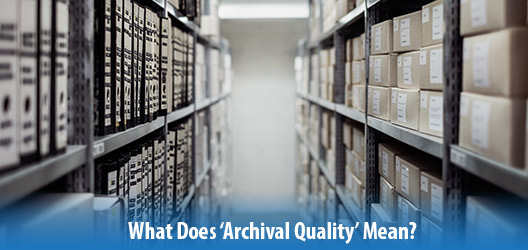For a quick overview on archival quality prints, take a look at our FAQ page.
There are many terms used to describe the archival quality of inkjet papers and every artist wants their work to stand the test of time. The problem is that there are many contributing factors when considering the archival quality of an image printed on inkjet fine art paper.
The first thing to consider is the paper itself
The term acid free has long been associated with archival quality when it comes to paper, but historically this terminology has only applied to the base paper without any type of coating applied. The base material should be manufactured using pure alpha cellulose fibre, pure cotton fibre or a combination of these two materials. This will ensure that the paper base is pH 7 or above (acid free).
A paper that contains lignin cannot be acid free as lignin is a naturally occurring acid within plant fibres. It is the lignin content in newsprint paper which causes it to yellow and go brittle over time.
For inkjet papers the coating must also be considered in combination with the base materials. The coating is applied to the surface of the paper base to ensure that the ink is absorbed just the right amount. Once a coating is applied, the pH value (acidity) of the entire paper changes. The only way for this to be addressed is for manufacturers to ensure that the coatings used on their papers are as close to acid neutral as possible and to supply the pH value of the total paper (base and coating) rather than just the base.
The second thing to consider is how the image is printed
The ink you print with has an effect on how long an image will last, no matter what the archival properties of the paper itself are. Inkjet fine art prints are commonly produced using either dye or pigment inks, each of these have different features. Dye inks usually produce a wider colour gamut than pigment inks, however the colours have been shown to fade faster than pigment inks under the same conditions.
The permanence (lifespan) of dye inks is constantly improving, however, most printers recommend the use of pigment inks when creating archival inkjet fine art print editions. This is why some inkjet fine art (Giclée) prints are also described as archival pigment prints. Speak to your ink manufacturer to get details of the lifespan of the inks you use.
Finally think about how the image is stored and displayed
When presenting inkjet fine art prints it is important that they are handled correctly. This is to ensure they maintain the archival quality of the paper and ink combination.
Papers can absorb chemicals from their environment. Loose prints should be kept flat and interleaved with acid free tissue paper. If prints are stored in wooden drawers, line the drawers with acid free materials: if the wooden drawer contains lignin this will effect your prints. When mounting prints ready for framing, ensure that any tapes, glues and mount boards used are acid free.
Light can be harmful to inkjet prints and cause them to fade faster than expected. Where possible do not hang prints in direct sunlight and use glass that has UV blocking properties. Temperature and humidity can also ruin a perfect print. The ideal conditions for inkjet fine art prints is a consistent temperature between 15ºC and 20ºC with a relative humidity level of 40-60%. Fluctuations in temperature can cause the print to deteriorate faster than expected and high moisture levels invite mould to grow and may cause the paper surface to cockle.
Archival quality checklist
- Ensure that the pH value of inkjet papers refers to the base and the coating, not just the base.
- Ensure that you are using inks with a proven long life span to print your images.
- Ensure that all the materials used to mount, frame and store finished prints are acid free.
- Display your own prints out of direct light, in an environment with stable temperature and humidity levels. If you sell prints, advise your customers to do the same.
Recieve articles like this one direct to your inbox: click here to subscribe to our newsletter.

